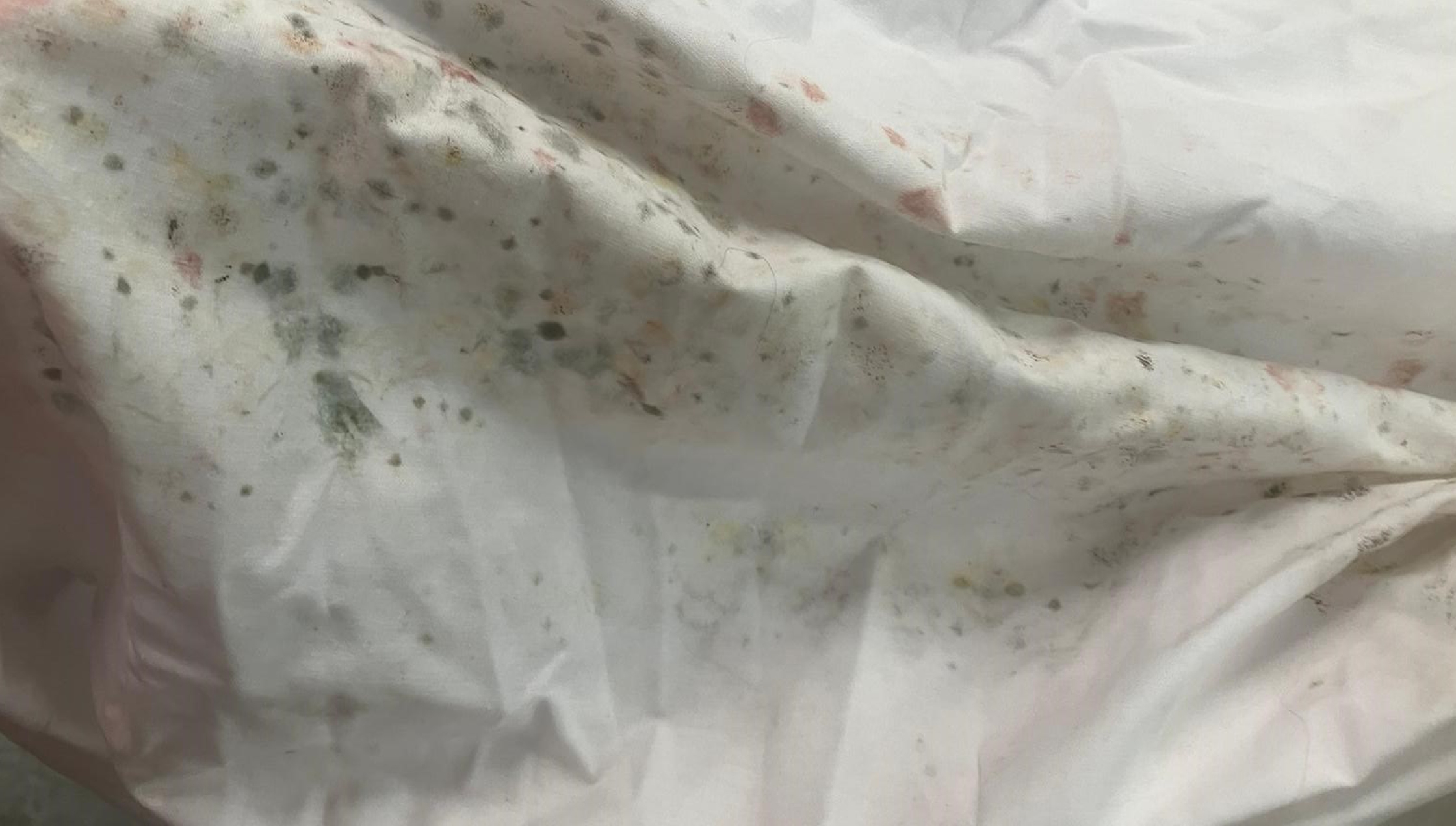Mould is a natural organism that thrives in moist, warm environments.

In commercial laundries, mould can pose significant challenges, as it degrades fabric quality, shortens linen life and poses hygiene risks. Mould, caused by fungi like Aspergillus and Cladosporium, can quickly spread when linens are left damp or improperly stored.
How mould forms on linen
Mould formation typically occurs due to delays in processing wet or damp linen. Linens left in warm, humid environments, or stored in sealed bags or bins, create perfect conditions for mould growth. Common causes include:
- Damp linen storage: Linen left damp after use or after washing is at high risk, especially when stored in sealed containers that trap moisture.
- Environmental conditions: High humidity and poor ventilation contribute to mould formation.
- Delayed collection: When linen sits too long at a customer’s premises or the laundry facility, it becomes highly susceptible to mould.
Consequences of mould on linen
Once mould forms, it’s difficult to fully remove and can lead to costly outcomes:
- Intensive washing: Removing mould requires heat, strong chemicals and multiple wash steps, increasing costs and labour.
- Fabric damage: The aggressive wash process weakens fabric integrity, leading to premature wear and tear.
- Discarded linen: Severe mould damage may render linen unsalvageable, resulting in direct financial loss.
- Cross-contamination: Mould spores can spread through a facility, contaminating fresh linen if not properly handled and segregated.
Preventing mould in commercial laundries
Prevention requires proactive measures and strict protocols:
- Frequent linen collection: Quickly collect and sort damp linens to reduce the risk of mould growth.
- Proper ventilation: Maintain correct air circulation to reduce the risk of staff mould spore inhalation or mould spore spread throughout your facility.
- Linen segregation: Separate potentially contaminated linens to prevent mould spread.
- Prompt processing: Quickly wash and dry linens after collection to minimise mould growth.
- Training and monitoring: Train staff on early mould detection and maintain processes to prevent mould issues.
- Use of mildewcides: Use this to slow the progress of mould, rather than eliminate it – it should NOT cost you any extra as part of a complete chemical program.
Mould in commercial laundries can lead to serious operational and financial consequences. Preventative actions like prompt linen collection/processing, proper storage and regular equipment maintenance can help laundries avoid costly mould damage – ensuring cleaner linen and a healthier bottom line.
Did you know?
JayChem has a Mould Remediation Specialist (MRS) on staff who is IICRC certified – just another reason to give us a call for all your commercial laundry chemical needs.
By Ian Elliott.
